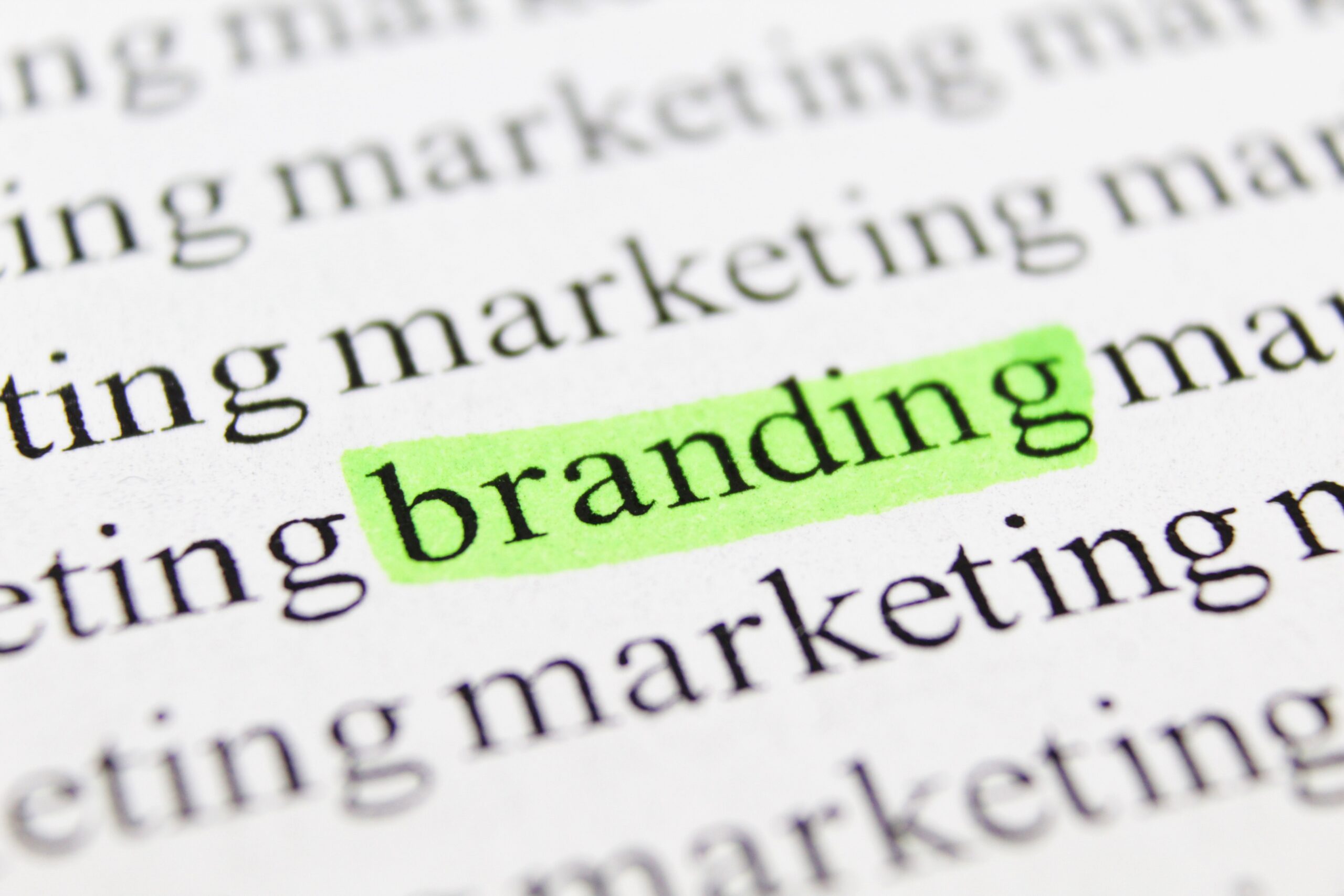As marketers, we talk about branding a lot, it seems to come up in every other sentence, so you may be wondering, what’s all the fuss about? As it’s not a directly promotional activity, many are led to ask, “what actually is the point of branding?” and we’d like to help clear things up.
We’ve helped many medical device companies to develop and refine their branding over the years, so we’ve seen what Medical branding can help to achieve. We’ve also become very familiar with the downsides of branding, so are here to provide an honest overview of both sides of the story.
We’ll talk you through what branding is, what it consists of, what it can help you to achieve, and some things to consider before starting. By the end of the article, you should feel much more confident discussing branding and deciding how much of your time and money you should be investing in it.
What is branding?
To really understand what Medical branding can do for you, as well as its downsides, it’s important to define exactly what we mean by branding and give you a quick overview of the elements involved.
Put simply, branding boils down to defining your company or products unique, recognisable identity.
Many believe that branding is solely about how company’s present themselves, and although that is a vital part of branding, it’s also about the feelings that all that external presentation provokes.
Branding can be broken down into two parts.
Brand message
A brand message is the core idea or central statement that encapsulates the essence of a brand. It’s a concise and powerful expression of what the brand stands for, its unique value proposition, and the benefits it offers to customers.
A brand message goes beyond just the features or attributes of a product or service. It aims to evoke an emotional response, connect with the audience on a deeper level, and differentiate the brand from its competitors. It should be memorable, compelling, and align with the brand’s overall positioning and values.
Brand messages can take various forms, such as taglines, slogans, brand promises, or mission statements. They serve as a guiding principle for all brand communications, helping to maintain consistency and clarity across different marketing channels.
Brand identity
Brand identity refers to the tangible elements that represent a brand. This includes elements like the brand’s logo, colour palette, typography, imagery, soundtracks, and overall design aesthetics. These elements work together to create a recognisable and cohesive look and feel for the brand.
In addition to these tangible elements, brand identity also takes into consideration the brand’s personality, values, mission, and voice. It includes the tone of communication, language style, and the overall brand experience. These help to shape the emotional connection and relationship between the brand and its audience.
All these elements, whether tangible or intangible, are strongest when they’re moulded around the brand message and specifically chosen because they represent an aspect of that message.
Looking to update your medical device branding? Speak with one of our Medical Device marketing experts about your brand update today
What branding can help you to achieve
It can be hard to understand the importance of branding, because it doesn’t produce tangible results.
The truth is though, without effective branding, your future marketing materials may not get the results you had hoped for, because they will not resonate with your audience. This is what branding can do for you.
Brand awareness
Brand awareness refers to the level of familiarity and recognition that a brand has among its target audience. It is the first step in the consumer decision-making process and plays a crucial role in attracting and capturing the attention of your target audience.
There are two primary types of brand awareness:
1. Brand recognition is the ability for your audience to identity your brand when presented with it. For example, recognising your logo when they see it.
2. Brand recall is how well your audience can remember your brand from memory when prompted. In real life terms, when they’re in need of a product or service that you offer, are they going to be able recall your company? This part of brand awareness is affected by your brand message.
Both have a direct impact on your revenue. If your audience can’t recognise you when they see you, how are they going to remember you, and if they can’t remember your company and its message, you won’t be front and centre of their mind when they’re ready to make a sale.
Impactful, consistent branding can help to ensure that your audience recognise and remember you, resulting in increased sales and revenue.
Expedited customer journeys
The rule of 7 is a decades old marketing idea that suggests your audience needs to see your brand at least 7 times before they commit to making a purchase. In this digital age where newsfeeds are saturated with brands and noise comes from all directions, the number is likely closer to 15, if not 25.
That means the customer journey takes from the first time they see your brand, until potentially the twenty-fifth time they see your brand, which could take months, if not longer.
Having a strong brand can shorten this journey though, by providing clarity, familiarity, and trust throughout the various stages of the customer’s decision-making process. This means, your audience may not need to see you as many times before committing to purchase, greatly expediting the customer journey and improving your sales.
Increased revenue through building trust
Earning the trust of your audience is one of the keys to successful marketing, after all, who is going to buy from a company they don’t trust?
Consider this idea in the context of new product launches, it can take years for your product to reach maturity in its product lifecycle (where it’s established and at its peak in terms of sales).
Oftentimes, consumers need to hear from other consumers to be reassured that your product performs as expected, but how do you get those initial product supporters if there are no other consumers to reassure them in the first place?
This is where trust comes in. If people trust your company, they’ll be more willing to be the first to try your new products, and therefore you’ve already secured your initial product supporters, massively expediting your product’s journey to maturity.
Therefore, it’s fair to say that building trust is crucial for growing your revenue, but how can branding help you achieve this?
When done correctly, brands have almost as much depth as a real person. They have personalities, likes, dislikes and quirks of their own. All of this comes together to form something that people can relate to and resonate with, so it makes sense that they would also trust a brand with this kind of depth.
Similarly, when a brand taps into the emotions and aspirations of its target audience, it creates a bond based on shared values and desires. Emotional branding helps customers feel understood, appreciated, and valued, leading to greater trust in the brand.
Consolidated teams
Branding provides a shared vision and identity for employees, allowing them to understand the organisations values, mission, and desired brand image.
This shared understanding unites teams and helps them to work together more cohesively, as they are all working towards a common goal. It can also provide teams with a sense of belonging as they have a clear purpose and vision of how they are making a difference.
The downsides of branding
As with everything in life, branding isn’t perfect. It’s not the one marketing activity that is going to turn your company into a raging success overnight, rather you’re creating the strong foundations to build upon (without which, your building may crumble).
As well as all its bright sides, branding does have some drawbacks that are worth discussing.
Time-consuming
Doing Medical branding in the right way, where it will be most impactful and effective, is not a quick task. It involves a company workshop and interviews, multiple ideas sessions and in-depth market research.
It can take months to reach a point where your brand is correctly defined and ready to implement, you can’t consider it a quick win marketing task. However, once it’s done, it can positively impact all your marketing activities and last for years.
Requires consistency
To be effective, branding must be consistent, otherwise you may dilute the image that you’re trying to build.
This means that all materials from your company need to be in line with your brand, which isn’t always easy.
Strict brand guidelines need to be distributed amongst your team and any relevant external providers, and the whole company needs to be in agreement about what your brand is and how it should be represented.
Not directly measurable
Measuring the impact of branding can be challenging because it doesn’t produce quantifiable metrics. As a result, it can be hard to see the point in spending all that time developing it.
Many metrics, such as customer engagement, number of leads and revenue are certainly influenced by branding, but the success or failure of them cannot be directly attributed to it.
Surveys and interviews can give an insight into how your brand is viewed by your audience and therefore how it’s performing, but all of that information is subjective and will change from person to person.
Further learning
Branding is a huge topic with so much to learn and even after all of our years in marketing, we still hear new theories and new ways to consider things, and we also continue to learn what great branding can achieve.
If you’d like to learn more about branding, here are a few articles we’d recommend:
You can also check out our medical device branding service page to discover what we offer here at Podymos, and get in touch with us.
Medical Device branding with Podymos
Do you want to communicate more effectively with your MedTech audience? Do you aspire to develop a medical device brand that supports every aspect of your marketing strategy, to accelerate your sales force effectiveness and grow your digital presence? If so, you’re in the right place.
Podymos is a specialist medical device marketing agency. Our services might be a bit pricier than non-specialised agencies and freelance teams, and that’s because our exclusive focus on the medical device space equips us with specialised knowledge and expertise that others might not offer.
If you want high-quality, compliant campaigns that help achieve your business goals, we’d love to hear from you. Simply leave us your contact details below and we’ll get back to you very soon for a no obligation chat.










